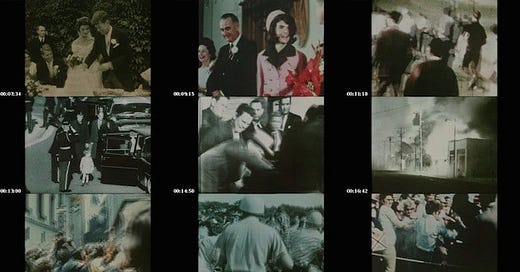The Doc Option: Watch ‘The Killing of America’ Instead of ‘Sin City: A Dame to Kill For’

Sin City: A Dame to Kill For is a fake of a movie. It is a concretion of film noir tropes that has none of the pathos or thematic richness that people love noir for. Its paper characters match its comic-booky aesthetic, which was interesting when the first Sin City came out nine years (!) ago, but is stale now. It aims for cheap thrills, which is not ne…
Keep reading with a 7-day free trial
Subscribe to Nonfics to keep reading this post and get 7 days of free access to the full post archives.



